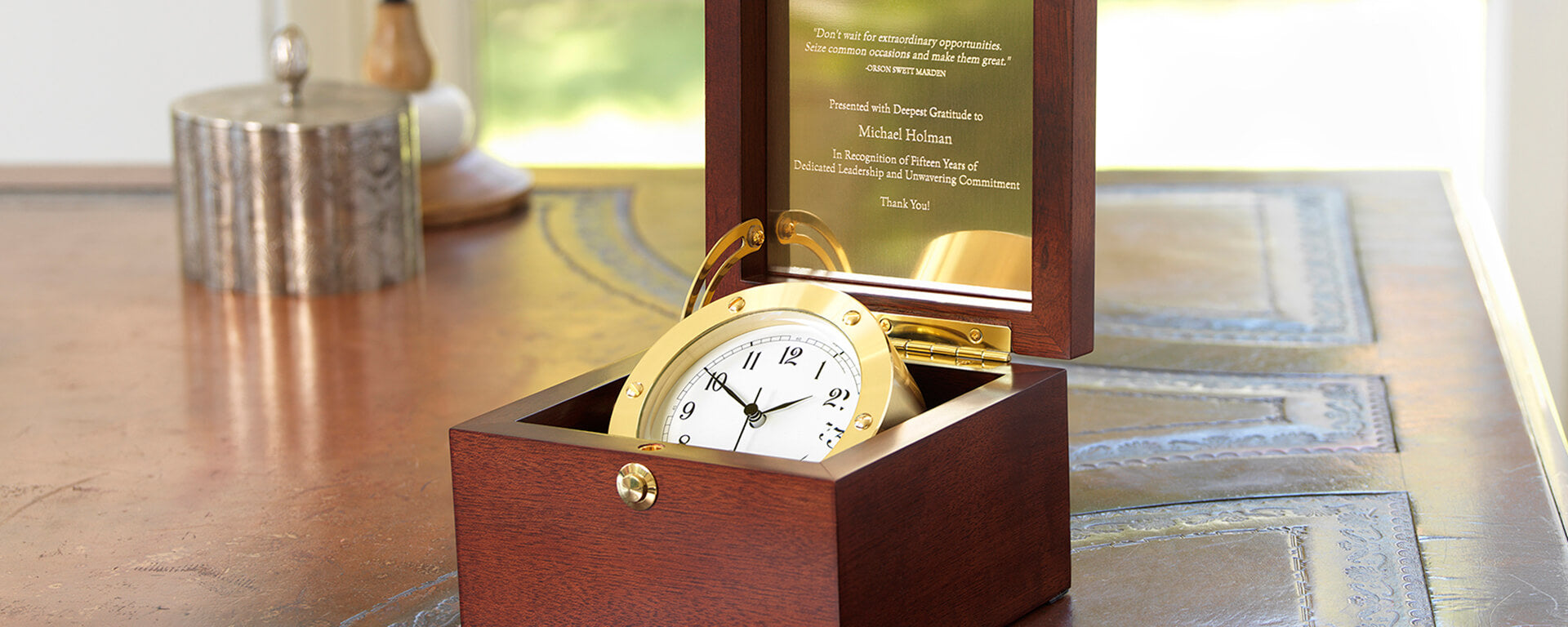Remembering the Chelsea Flood of 1985
Longtime Chelsea employee John McCarthy remembers the disastrous Chelsea Clock factory flood in an essay titled "Everything was Floating."
It was Wednesday August 12, 1985. I was sleeping peacefully just before midnight when my wife woke me with news that there was a security breach at Chelsea Clock. ADT was on the phone.
Torrential rains had been flooding the area all day, and a basement sump-pump failure was alerting the security system of a malfunction.
Leaving my town of Winthrop shortly after midnight in my miniature Hyundai was not a good idea. As it turned out there was no way for me to navigate the flooded parkways. Returning home again I borrowed my son's Chevy Blazer which had four-wheel drive. Then, to avoid parkways, I traversed through East Boston, which was flooded, but passable.
I finally arrived at the factory just before 1 am and both Everett Avenue and Carter Street were inundated with stalled vehicles in both directions. I parked just outside the main gate. The yard was so flooded it would have been impossible to get through the garage door.
Once inside, the ADT control panel revealed that at least four basement motion detectors had been activated. I tried to get to the basement but my attempts at doing so safely proved futile. The water level was rising above the lower stairwell. Illumination from my flashlight and the dim stairway light revealed that down on the lower level, everything was floating.
Forced to retreat to the main office, I notified the ADT dispatcher of our dilemma and told him the factory would be covered by onsite personnel for the rest of the night. He said he would notify the Chelsea Fire department accordingly. Then I called my wife, who was awake and dutifully concerned about my whereabouts.
At this early hour I chose not to call Chelsea management personnel, as the situation was simply not manageable at current time -- and the need for all fresh hands would be imperative come daylight hours. (If you've never slept in a swivel chair with feet resting on a desk, trust me, you haven't missed anything. Ha!)
By 5 am I began making calls to our company officers and department supervisors. Production manager Ed Dunn was the first to arrive shortly after 6. Needless to say, Ed was shocked, (as I was) at the deplorable conditions in the basement.
In daylight we could see that everything buoyant was floating past us, inside the factory and out. The surface water was black with oil from our overturned drums, and the overflow from the adjacent junk yards. The horrific sight was accompanied by the acrid odor of ruptured doldrums (acetic acid, plus hydrochloric and chromic acids).
I returned home at 8 am, and enjoyed a hearty breakfast with my ever-dutiful spouse and then returned to the factory at noon. By then the storm had subsided and an army of city, state and federal agency employees had descended on our factory. The Environmental Protection Agency (EPA), designated the area as a hazardous waste concern, and assigned a licensed site professional to monitor and oversee the cleanup and disposal.
At 1 pm, Clean Harbors arrived with two massive tanker trucks and started vacuuming the surface oil and acid residues from the factory basement and exterior yard. The good news was that the flood waters began receding, and by 6 pm, the ground was bare again except for an oil slick that was treated with Speedi Dri.
Early on Friday morning, the process of assessing the damage began with the arrival of a representative from the insurance carrier. It was mutually agreed that anything below the four-foot level had to be replaced or repaired to its original condition. This included thousands of in-process clocks, clock parts, raw material, machinery, motors, large and small tools, lacquer, steam boilers, degreasing equipment, employee personal belongings -- not to mention lost labor costs due to the temporary shutdown of basement production. It was clear we would need a professional cleanup company to ensure the quality of the restoration.
A week later, as lead supervisor, I submitted a physical property damage list to the accounting department. Damage was estimated at over $300,000, and did not even include the bill from Clean Harbors or the cleanup company mandated by the insurance carrier. The good news (if there was any) was that our insurance policy flood-damage deductible was under $10,000.
The entire cleanup took between eight and ten weeks and was signed off as satisfactory by the EPA. Line production resumed by October, nearly two full months after the catastrophic event, yet just in time to complete holiday orders.
Once again, Chelsea Clock employees had rallied together to overcome a potential disaster.
-JMC
Read more about the historical trials of our factory here.









